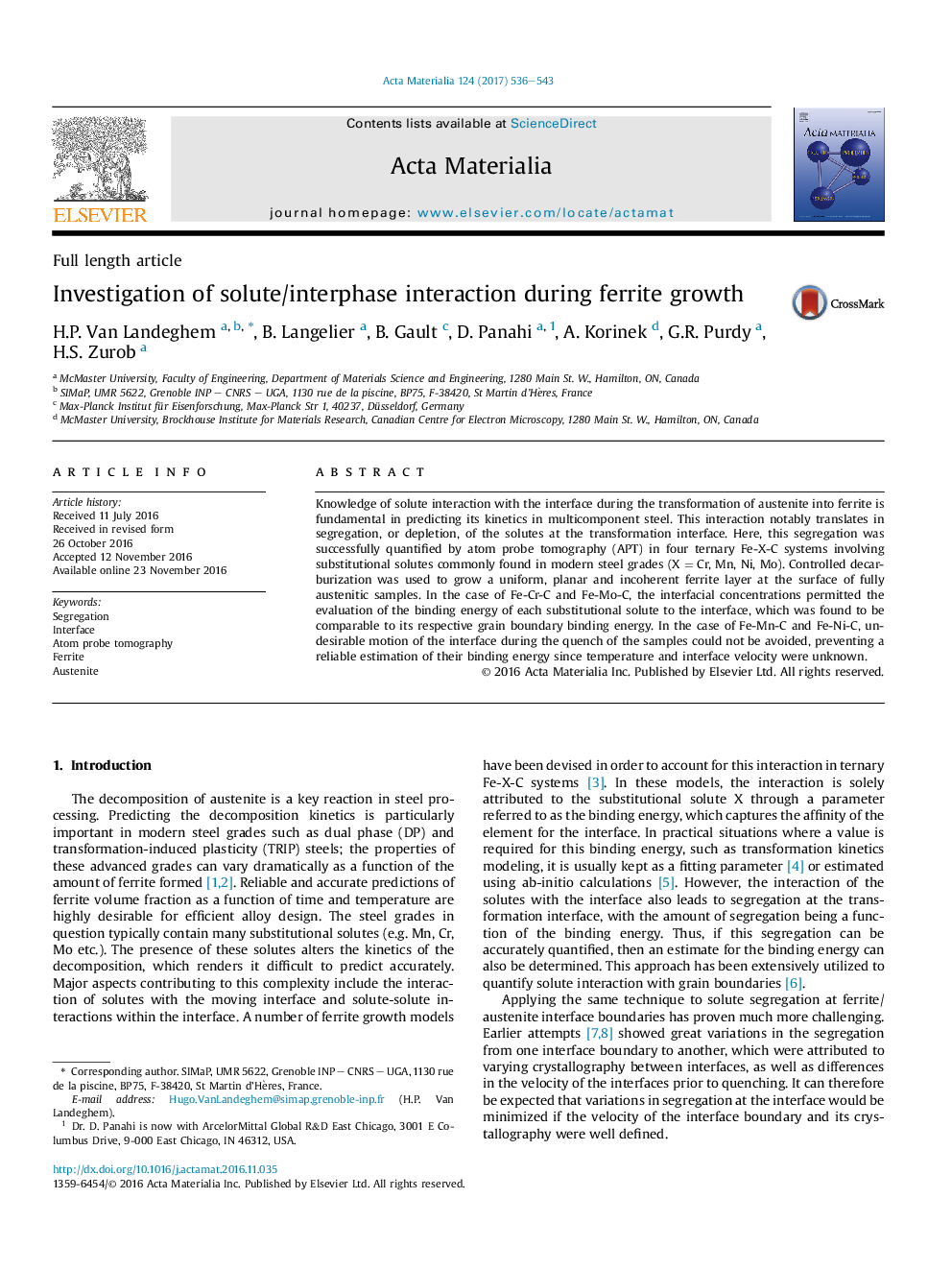| Article ID | Journal | Published Year | Pages | File Type |
|---|---|---|---|---|
| 5436472 | Acta Materialia | 2017 | 8 Pages |
Knowledge of solute interaction with the interface during the transformation of austenite into ferrite is fundamental in predicting its kinetics in multicomponent steel. This interaction notably translates in segregation, or depletion, of the solutes at the transformation interface. Here, this segregation was successfully quantified by atom probe tomography (APT) in four ternary Fe-X-C systems involving substitutional solutes commonly found in modern steel grades (XÂ =Â Cr, Mn, Ni, Mo). Controlled decarburization was used to grow a uniform, planar and incoherent ferrite layer at the surface of fully austenitic samples. In the case of Fe-Cr-C and Fe-Mo-C, the interfacial concentrations permitted the evaluation of the binding energy of each substitutional solute to the interface, which was found to be comparable to its respective grain boundary binding energy. In the case of Fe-Mn-C and Fe-Ni-C, undesirable motion of the interface during the quench of the samples could not be avoided, preventing a reliable estimation of their binding energy since temperature and interface velocity were unknown.
Graphical abstractDownload high-res image (227KB)Download full-size image
